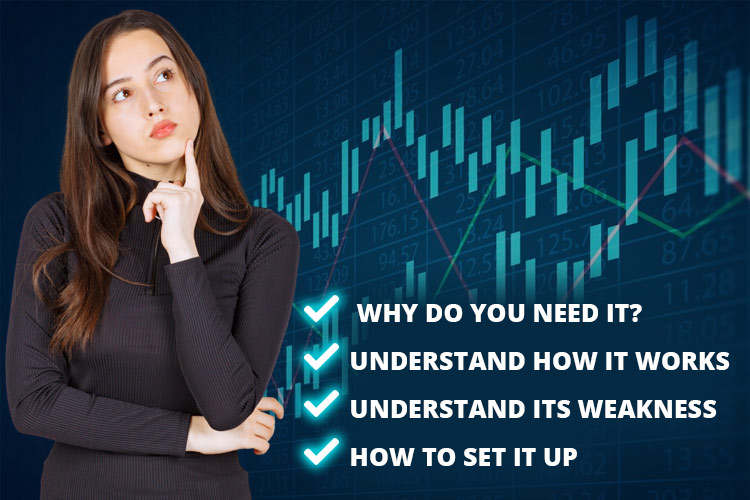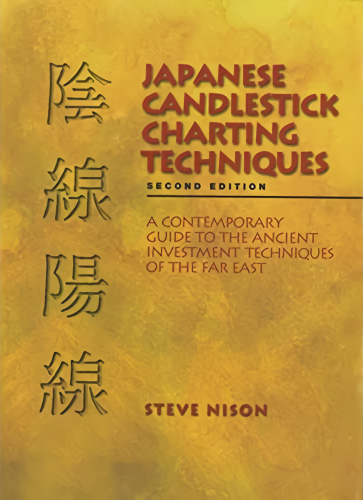Choosing the best indicators should be tailored to your trading style. So, have your preferred indicators been thoroughly tested? Here are 4 tips for ing the right indicators.

With today's technological advancements, forex trading activities have become much easier thanks to the presence of various technical indicators. Choosing the best indicators can make it easier to determine various things, such as buy or sell positions, entry and exit levels, and so on.
Although no Holy Grail indicator can guarantee trading success, it does not mean there is no best indicator for you. You can choose one or more indicators from the many available indicators to apply to your trading.
Choose the best indicators for your trading system and style to avoid being trapped by FOMO. How do you choose the best among the many indicators available? There are several steps you can take:
- Understand how it works: Help you understand how to use it efficiently
- Understand its weakness: You can take better precautions for this
- Learn how to set it up: Get the best setting for maximum profits
Tips for Choosing the Best Indicator for Trading
The success of an indicator depends on your trading system and style. Choosing a difficult indicator is pointless if it's not suitable for you, especially if you don't know its functions. It's like cutting fruit; you must use a fruit knife and not an electric saw, right?
Therefore, answer and check the following 3 checklists to determine whether your chosen indicator is suitable.
1. Understand How It Works
The first tip in choosing the best indicator is to understand its functioning. You should know how each indicator interprets signals, but memorizing complex formulas is unnecessary. It would help if you comprehended how each indicator operates.
For instance, the Parabolic SAR indicator displays dots above and below the trading chart. The dots above signify a downtrend, while the dots below indicate an uptrend.
When you install an indicator, you can customize its parameters because all indicators come with default settings. For instance, the default parameters for the Stochastic indicator are 5, 3, and 3, while for the RSI indicator, it is 14. You can modify these parameters according to your requirements.
2. Understand the Indicator's Weakness
Selecting the best indicator isn't just about comprehending its function and limitations. Doing so lets you be more careful if the indicator fails one day. Keep in mind that no "guaranteed" indicator is easy to use. Therefore, you must pay attention to market scenarios that may have gaps.
For instance, the Moving Averages indicator is unreliable in sideways markets, so you must be cautious to avoid getting caught in wave-like price action. Additionally, some oscillators anticipate reversals too soon, making you vulnerable to false signals if you solely rely on the primary indicator with incorrect parameters.
Remember, regardless of the technical indicator used, none can forecast the direction of the next price movement with certainty. The risk of false signals will persist.
3. How to Set It Up?
The final tip for choosing the best indicator is understanding its trading settings. Assuming you already know which indicator to use to support your strategy, the next thing you need to understand is the best settings for the indicator.
Remember, shorter or lower settings produce more sensitive indicators, thus generating more signals. On the other hand, longer or higher settings will provide rarer signals and tend to have gaps. Which setting is most suitable for you?
Some traders argue that default settings are the best because most market participants often use them. However, if you find settings that combine current market conditions or have a good track record with other indicators, immediately backtest them to confirm their efficacy.
See Also:
Conclusion
Choosing the appropriate indicators will make your trading system more complete. Technical indicators help you detect important signals and execute trades accurately, provided that you understand how they work and how to combine them. Hopefully, the 3 tips above could help you choose the right indicator that complements your trading strategy.
There are all kinds of technical indicators, and you don't have to use them separately. Most traders tend to compile several indicators simultaneously for better results. But how do you combine multiple indicators?

 Dedicated FREE FOREX VPS
Dedicated FREE FOREX VPS Free FOREX Virtual Private Server
Free FOREX Virtual Private Server MT4 Demo Contest, Get $500
MT4 Demo Contest, Get $500 Sign Up for an Account, Claim 60% Deposit Bonus
Sign Up for an Account, Claim 60% Deposit Bonus Free MT4/MT5 VPS 2024
Free MT4/MT5 VPS 2024 Send E-mail and Get Free Merchandise
Send E-mail and Get Free Merchandise $1K Refer a Friend Bonus for Pepperstone Pro clients
$1K Refer a Friend Bonus for Pepperstone Pro clients Maximize Your Earnings with 100% Deposit bonus
Maximize Your Earnings with 100% Deposit bonus Trade to Win, $5,000 Monthly Demo Contest
Trade to Win, $5,000 Monthly Demo Contest Claim 30% + 15% Deposit Bonus from LiteFinance
Claim 30% + 15% Deposit Bonus from LiteFinance











